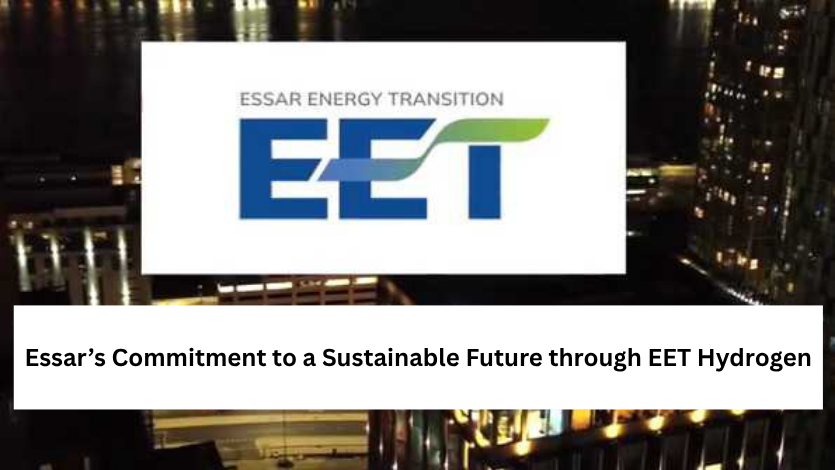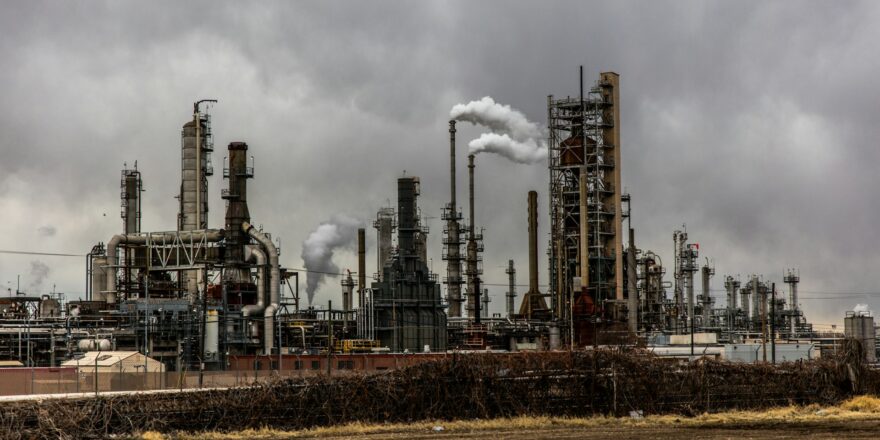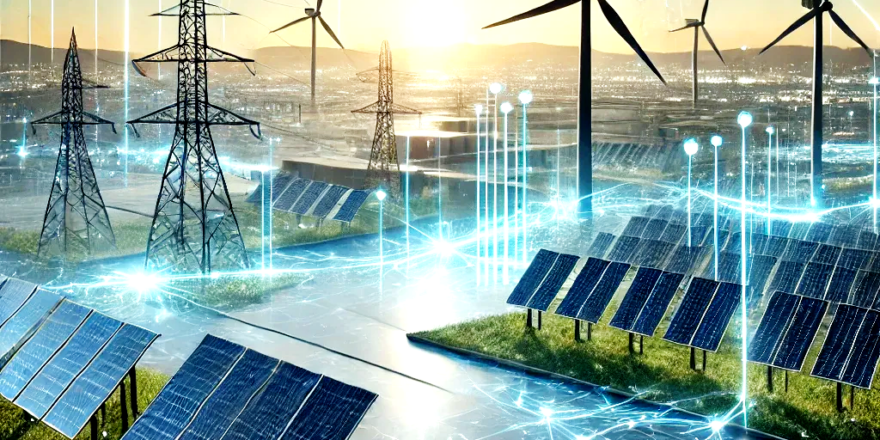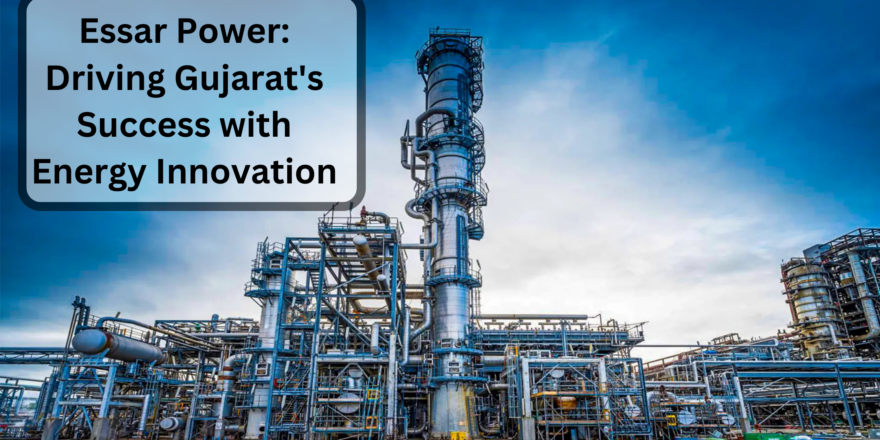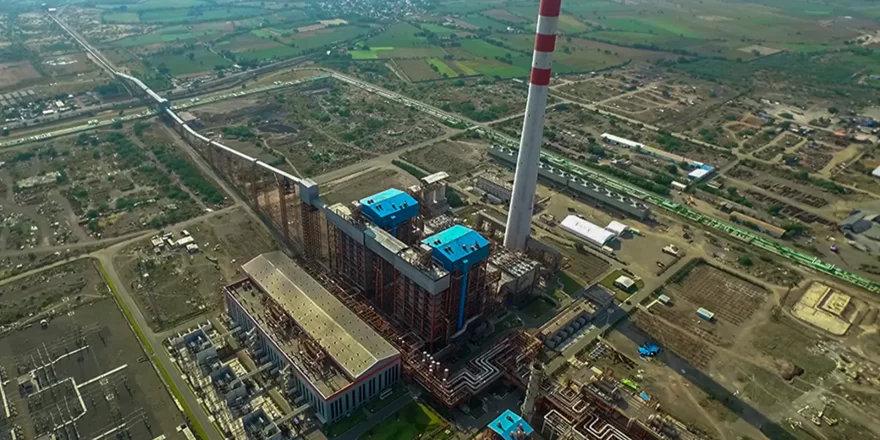In today’s world, where adopting sustainability is crucial for economies to grow, Essar is driving change for a greener future both nationally and internationally. As part of its commitment to a cleaner future, the company invests in hydrogen solutions in the UK through EET Hydrogen. EET Hydrogen, a division of Essar Energy Transition (EET), is a leading player in the energy transition and is developing one of the world’s first large-scale, low-carbon hydrogen production hubs.

Though Essar debt was in the media sometime back, the company is effectively debt-free now. It deftly handled the challenging times by monetising few of its carbon-heavy assets. While the strategy helped Essar deleverage its balance sheet at one end, it also enabled the company rebalance its portfolio to cleaner businesses. With a much stronger and agile financial base, Essar is now investing in building sector-transforming clean businesses at a global scale.
EET Hydrogen’s HPP1 Project
EET Hydrogen is developing the first large-scale, low-carbon hydrogen production hub in the UK at its site in Stanlow. This hub will produce 1,350 MW of hydrogen capacity and capture approx. 2.5 million tonnes of carbon per annum, which is equal to taking 1.1 million cars off the roads. EET Hydrogen’s first hydrogen project, HPP1, is a cornerstone of the HyNet initiative and plays a vital role in enabling the planned hydrogen infrastructure across the North West.
This blog discusses the HPP1 project, which has received funding from the UK government, and how it can result in a more sustainable energy landscape.
Key Points of UK-Government Supported HPP1 Project
Essar Energy Transition (EET) recently announced the UK government’s funding support for the HyNet cluster. HyNet Northwest is one of the UK’s leading industrial decarbonization projects. Run by a consortium led by EET, the project will lessen carbon emissions in industry, homes and the transport sector. The UK government has also extended its support for the project, placing it on a fast track for incentives and regulatory approval alongside the East Coast Cluster. The UK government will provide funding worth £21.7 billion for the next 25 years to aid the construction of two carbon capture clusters in northern England, including large blue hydrogen projects.
Each year, HyNet will reduce CO₂ emissions by 10 million tonnes by 2030, which is equivalent of taking 4 million cars off the road, while creating job opportunities for many.
EET to Develop Low Carbon Hydrogen Production Hub at Stanlow
The EET Hydrogen hub will enable regional industrial and power generation businesses to decarbonise by migrating from fossil fuels to low-carbon energy. Essar’s Stanlow refinery there, and other regional companies, including Pilkington, Tata Chemicals, etc., will use the low-carbon hydrogen produced by EET Hydrogen. The move will create the world’s first low-carbon refining operations and glass and chemicals manufacturing sites.
The hub will also support the growth and expansion of vital industries, create numerous job opportunities, and unlock billions of pounds of related investment.
EET Hydrogen will complete the hydrogen hub production in two phases. The first plant, Hydrogen Production Plant 1 (HPP1) will have a 350MW capacity. The second hub’s Hydrogen Production Plant 2 (HPP2) capacity will increase significantly. It will have a capacity of 1,000MW with an overall target capacity surpassing 4,000 MW by 2030. The development of the first phase will begin next year, with low-carbon hydrogen produced at the site by 2028.
HPP2 is owned 90% by EET Hydrogen & the remaining by Progressive Energy.
Hydrogen- the Fuel of the Future? Why?
Hydrogen energy is gaining immense attention as a clean and sustainable alternative to traditional fuels. With the world looking for ways to reduce emissions and transition towards green energy sources, hydrogen offers several advantages. Some of the benefits of using hydrogen as a fuel include:
No Direct CO2 Emissions
Hydrogen in engines, gas turbines, boilers, and fuel cells can create power and heat without direct CO2 emissions. Huge conglomerates like Essar are switching to hydrogen technologies to create a more sustainable world.
Energy Efficiency
Hydrogen energy is more energy efficient than traditional fuels. Conventional combustion engines waste a tremendous amount of energy as heat. Fuel cells convert a higher percentage of the fuel’s energy into usable electricity, enhancing overall efficiency.
Versatility
Hydrogen energy is more versatile and is thus used by multiple industries. It powers transportation, providing a zero-emission alternative to fossil fuel-powered vehicles, and can be used in various industries, including manufacturing and energy production. Moreover, hydrogen can be used and stored as a backup power source during surging demand or when renewable energy sources are unavailable. This versatility makes hydrogen a valuable solution for global energy needs.
EET Investment Programme to Accelerate UK’s Low Carbon Transformation
EET, also known as Essar Energy Transition, has an investment programme that is essential in the UK’s low-carbon transformation. It will support the government’s decarbonisation policy and create wider job opportunities for skilled candidates. Investments in hydrogen production technologies, decarbonisation, biofuel (road and aviation), and infrastructure projects will help North West England become one of Europe’s leading post-carbon industrial clusters. These investments will reduce carbon dioxide in the future.
Since the UK does not have solar and wind potential for producing renewable electricity, Essar will use natural gas to produce blue hydrogen and capture and permanently store the carbon produced. This method ensures that hydrogen production remains both scalable and sustainable.
Read Also: Essar’s Green Mobility Initiative: A Sustainable Path to Success
More Employment Opportunities
The EET Hydrogen hub will secure and expand significant industries, create better job opportunities, and unlock billions of pounds of related investment. The North West region leads the global industry by producing without the carbon impact. This government-supported funding helps secure and grow jobs in manufacturing heartlands for generations.
Conclusion
Essar’s firm dedication to a sustainable future is demonstrated through its projects like HPP1. Having overcome the challenges related to Essar debt, the company is paving the way for an energy transition to greener alternatives. The government’s backing reinforces the significance of this initiative, paving the way for a cleaner, more sustainable energy future. With the world moving toward a more sustainable energy landscape, Essar’s initiatives like the HPP1 project serve as a vital step in the transition to a low-carbon economy.
With continued investment in the sustainable energy sector, Essar is well-positioned to lead the way in promoting global sustainable practices.

